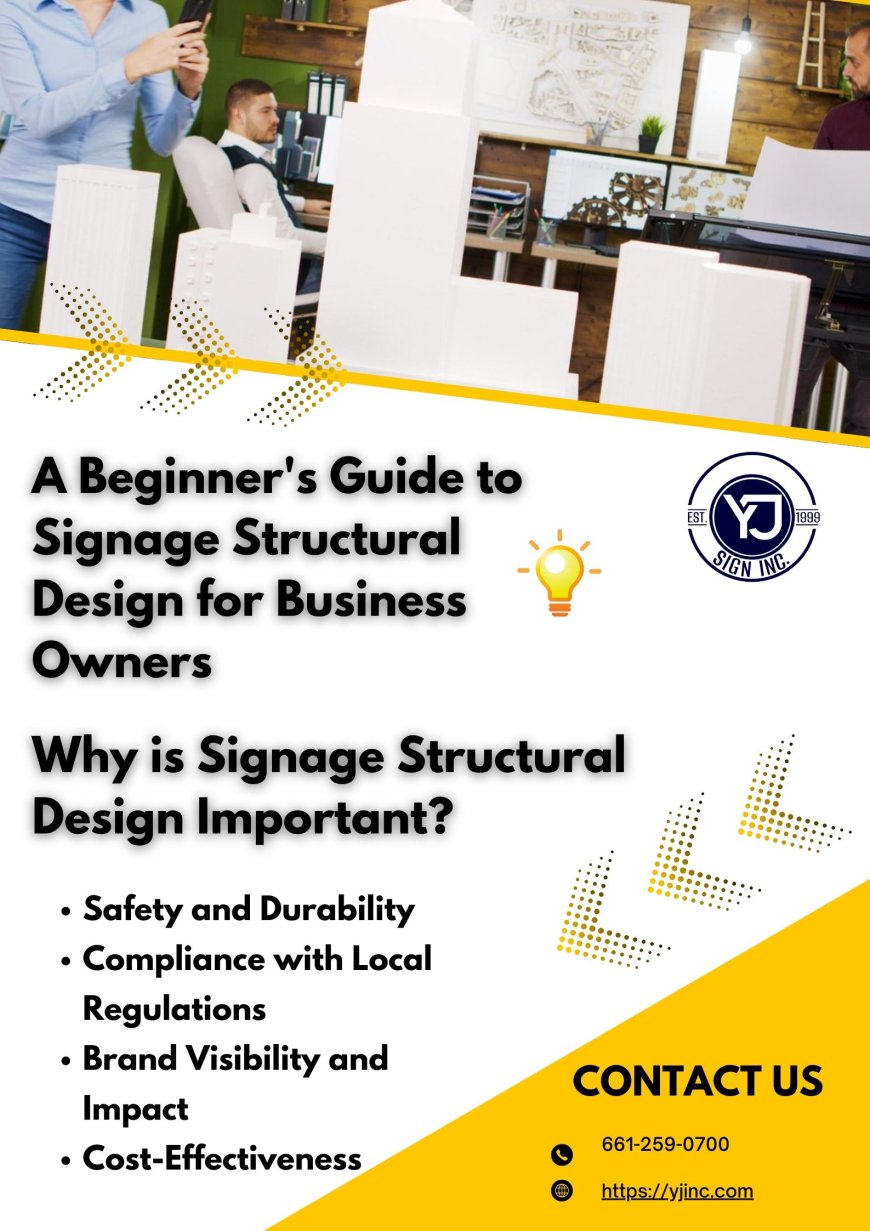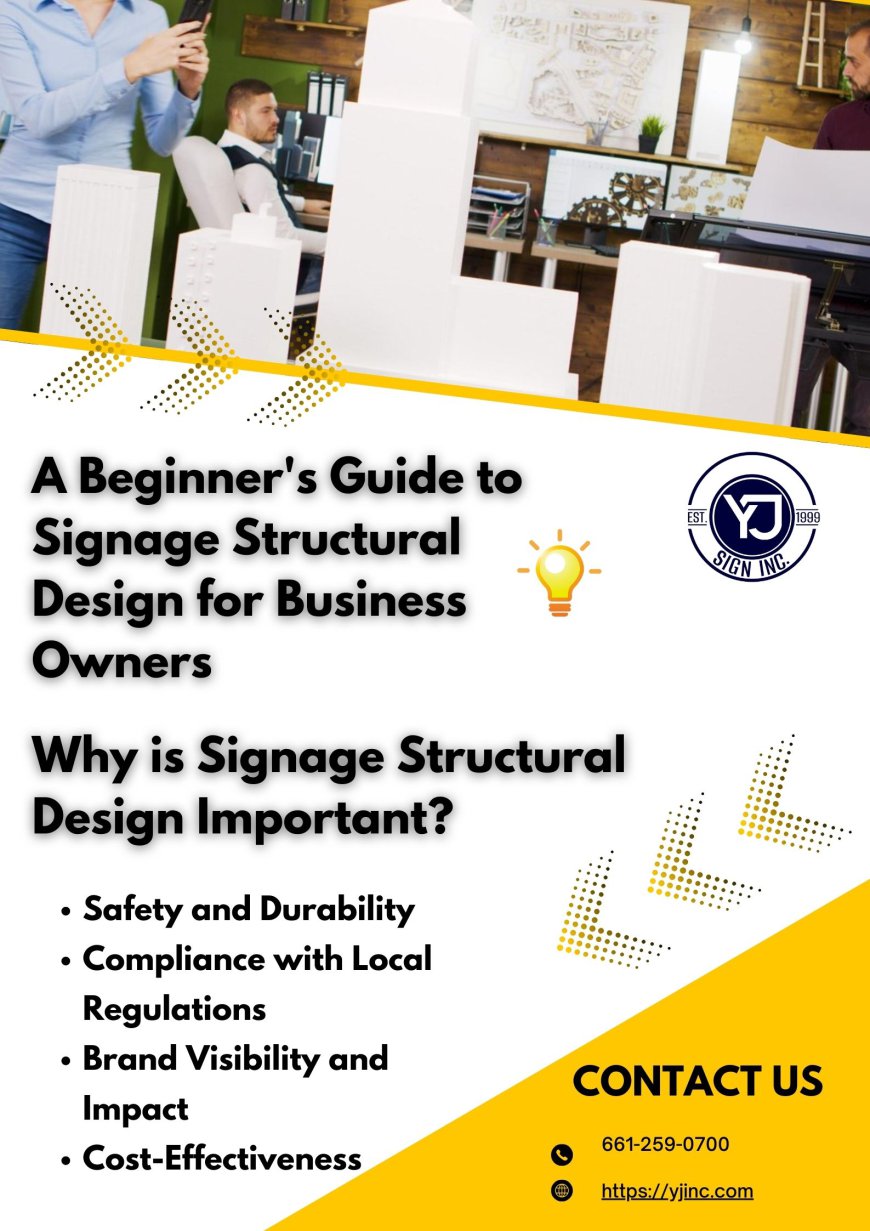A Beginner's Guide to Signage Structural Design for Business Owners

When starting a new business or updating your current signage, it's crucial to understand the importance of signage structural design. As a business owner, ensuring that your signage is both visually appealing and structurally safe is essential for brand visibility, compliance, and overall safety. In this beginner's guide, we'll break down everything you need to know about signage structural design and why it matters for your business.

What is Signage Structural Design?
Signage structural design refers to the engineering principles applied to create safe and durable signage systems. This process involves considering factors such as load-bearing capacity, wind resistance, materials used, and local building codes. Proper structural design ensures that signs remain intact and functional over time, regardless of environmental conditions, and comply with regulations.
Why is Signage Structural Design Important?
-
Safety and Durability
The primary goal of signage structural design is to ensure that signs remain safe and secure, especially in harsh weather conditions. Poorly designed signs can fall or be damaged, posing safety hazards. A well-engineered structure will prevent this by using appropriate materials and designs suited for the location. -
Compliance with Local Regulations
Many local governments have strict building codes and regulations that govern signage. These rules ensure that signs meet safety standards and can withstand environmental factors such as wind or seismic activity. A professional structural design will help ensure that your sign is compliant with these rules. -
Brand Visibility and Impact
Signs are often the first impression customers have of your business. Structural design plays a role in ensuring that your sign is visible, whether it’s a pylon, monument, or wall-mounted sign. Well-designed signage that stands up to weather will maintain its aesthetic appeal and continue to draw attention. -
Cost-Effectiveness
Investing in high-quality structural design can save you money in the long run. Proper design helps reduce maintenance and repair costs, as well as the risk of accidents that could lead to costly legal issues. A durable structure also extends the life of your sign, giving you better ROI.
Key Factors in Signage Structural Design
-
Material Selection
The materials used in signage structural design determine the sign's strength and longevity. Common materials include steel, aluminum, wood, and reinforced plastics. Each material offers different benefits based on durability, weight, and resistance to weather conditions. For example, steel may be ideal for high-wind areas, while aluminum might work well for lighter signs. -
Load-Bearing Capacity
Signage structures must be designed to support the weight of the sign itself, along with any external factors such as wind, snow, or even signage lighting. Engineers calculate the maximum load a structure can bear to prevent signs from collapsing or being damaged under heavy loads. -
Wind Load Resistance
Wind is one of the biggest challenges for outdoor signs. Signs need to be designed to withstand high winds, especially in areas prone to storms or hurricanes. Engineers calculate the wind load on a sign based on its location, height, and surface area to ensure it can resist these forces without tipping over or becoming a hazard. -
Sign Location and Size
Where you place your sign and its dimensions are crucial in determining the structural design. A large sign placed on a tall pole will require a stronger structure than a small sign attached to a building’s wall. Factors such as traffic flow, foot traffic, and visibility need to be considered to ensure that the sign is effective in attracting attention and within permissible limits. -
Environmental Considerations
Environmental factors such as temperature fluctuations, humidity, and exposure to chemicals or pollutants can affect the integrity of a sign. Designers and engineers will take these into account to ensure the materials and coatings used are suited for the local environment, reducing the risk of damage over time.
How to Choose a Professional for Your Signage Structural Design
-
Work with Structural Engineers
To ensure that your sign meets safety standards, it’s important to work with a structural engineer who specializes in signage. These professionals are knowledgeable in the local regulations and can provide designs that are compliant and safe. -
Check for Experience and Expertise
When hiring a professional, look for a company that has extensive experience in signage structural design. Ensure that the team has a strong understanding of both engineering and design to create a functional and visually appealing sign. -
Ask About Permits and Approvals
In many cases, you’ll need a permit to install a new sign. A structural engineer will be familiar with the application process and can ensure that all necessary approvals are obtained, avoiding costly delays or fines. -
Evaluate Past Projects
Ask for examples of previous signage projects. This will help you gauge the company’s ability to handle the complexity of your design and whether they have worked on similar projects in your industry.
Common Signage Structural Design Mistakes to Avoid
-
Ignoring Local Building Codes
Failing to comply with local regulations is one of the biggest mistakes business owners can make. Not only can this result in fines or the need for costly modifications, but it also jeopardizes the safety of your sign. -
Underestimating Environmental Stress
Many business owners don’t consider the long-term effects of weather or natural disasters on their signage. Properly accounting for wind loads, snow accumulation, and other weather factors is essential in keeping your sign intact. -
Choosing Inappropriate Materials
Some materials may not be durable enough for the specific climate or location of your sign. Selecting the wrong materials can lead to premature wear and tear, as well as potential safety risks. -
Overlooking Maintenance Needs
Signage needs regular maintenance to ensure its structural integrity. Neglecting this aspect can lead to unexpected repairs and more frequent replacements. Design your sign with future maintenance in mind, considering how easy it will be to access and repair.
Conclusion
Signage structural design is a vital aspect of creating effective and safe signage for your business. By understanding the principles behind signage design, such as material selection, wind load resistance, and local building codes, you can make informed decisions that will benefit your business in the long run. Always consult with professional structural engineers who specialize in signage to ensure that your sign is both functional and compliant with all regulations.
